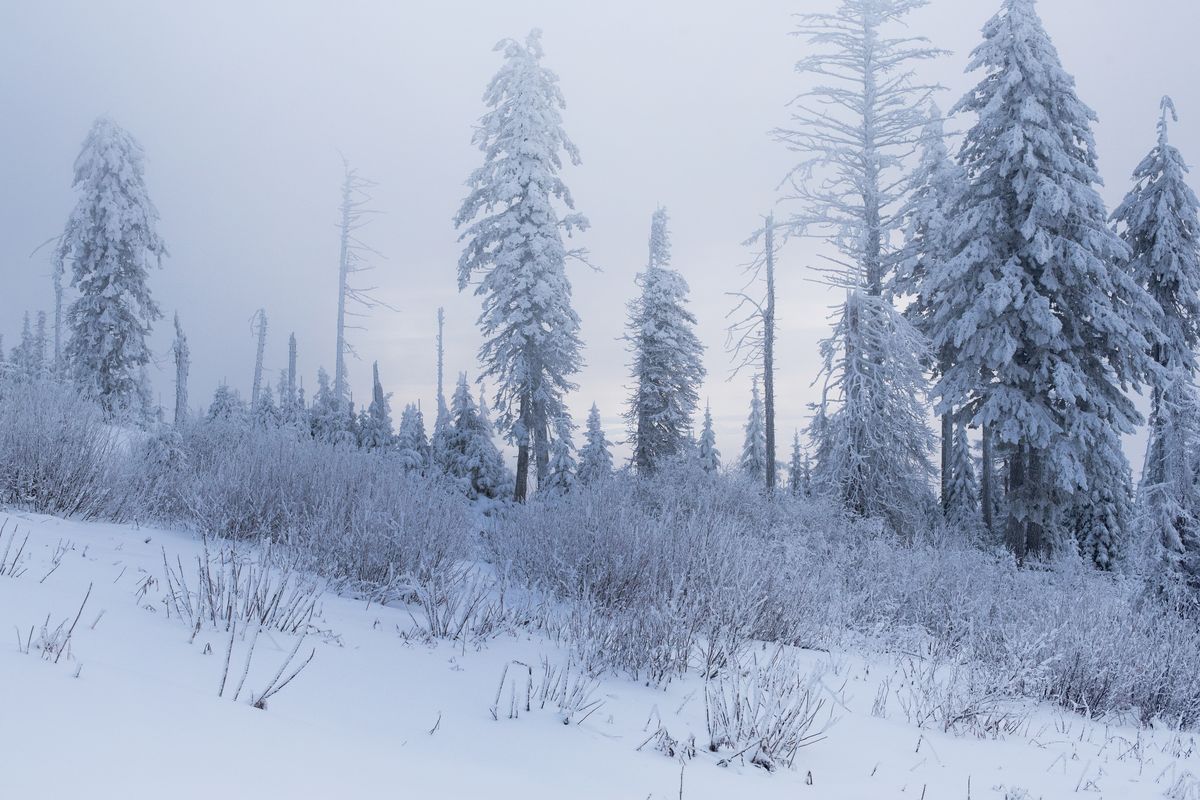Mt. Spokane’s new uphill ski policy raises concerns, questions and some hope from users

Mt. Spokane Ski and Snowboard Park has changed its uphill skiing policy, shortening the time skiers are allowed to ski up and instituting a $50 season pass.
The changes, which will go into effect when the resort opens in December, are temporary, said Jim Van Löben Sels, general manager for the park.
“I want to be a partner,” he said. “And we want to look at long-term solutions.”
Under the new rules, skiers can start from the base of Lodge 1 at 7:15 a.m. and must be transitioned to downhill skiing by 9 a.m. The new $50 Uphill Skier Winter Season pass gives users access to early hours parking and the ski hill.
The pass, van Löben Sels said, is so the mountain knows who is skiing and to pay for the services offered to uphill skiers, namely parking and grooming.
“It’s really just to monitor it and know who is in the concessions area,” he said. “But also, we’re providing a service. We’re grooming. It’s an access point.”
Season pass holders and daily lift ticket holders may use the uphill route before the resort opening, although parking permits have to be requested a week prior.
Previously, uphill skiers needed a Sno-Park permit to park in front of Lodge 1. That permit also gave users access to state park snow sites throughout the state.
The changes are making some advocates of the human-powered pursuit that sacrifices the ease of a chairlift for the burn of a good workout sweat.
“I tried to play by the rules and support the Sno-Park pass that was in place before,” said Landon Crecelius, an avid skier who runs the Backcountry Ski Friends website. “It just becomes a little less worth it, less days and less time.”
Uphill skiers use specialized nylon material – known as skins – that grip the snow to ski up. Once they reach the top, they take the skins off and go down. Unlike backcountry skiing, uphill skiing is done in a resort or an otherwise controlled and relatively safe environment.
Part of the issue, Crecelius and others said, is that Mount Spokane State Park shifted its opening time in 2019 from 6:30 to 7 a.m.
The resort has a concession with the state park and is on public land. The time change was to allow snowplows to work longer without the interference of parked cars, officials said.
Uphill skiers who relied on early morning starts to knock out a lap and still make a 9 a.m. meeting suddenly found themselves in a time crunch.
Additionally, Mt. Spokane Ski and Snowboard Resort changed its operating schedule this year. The resort, which had been closed on Mondays and Tuesdays during the season, will now be open seven days a week starting Dec. 18 through February, adding 14 days to the season. In addition, all lifts will operate during that time and Lodge 1 will be open daily.
All these changes, combined with the additional time restrictions, and a new, more expensive pass, have been hard to stomach for some in the uphill community.
Crecelius said it will be easier to rally support for the changes if they are truly temporary.
“Hopefully, it doesn’t stay a temporary situation for too long,” he said.
Van Löben Sels, the resort’s general manager, said he hopes to develop a comprehensive policy over the course of the next year.
Ideally, he said, that policy will allow uphill skiing in a designated area all day. Other resorts across the nation have similar policies, including Washington’s White Pass resort.
That’s a priority for Mt. Spokane because of the growing interest in uphill skiing, Van Löben Sels said. He compares it to snowboarding in the 1990s. Many resorts initially banned boarders only to regret it later.
“The ones that embraced it ended up being more successful,” he said. “Either they switched or they didn’t.”
The data supports his assessment. According to the National Ski Areas Association, 53% of resorts in the United States allow some type of uphill travel.
Mt. Spokane is the only regional resort with an uphill policy.
At the same time, sales of uphill-style bindings have risen, even as overall ski and snowboard participation has dropped. According to one analysis, backcountry gear sales have risen 137% in the past three seasons. It’s the only area in the ski industry that’s seeing growth, said Travis Nichols, a backcountry skier and uphill skier who helped develop Mt. Spokane’s original policy and used to work for Mountain Gear’s corporate office.
“Without hesitation, the only growth area is uphill and backcountry ski products,” he said.
Nichols hopes that resorts start to see the value uphill skiers can bring.
Unlike backcountry skiers, uphill skiers aren’t going deep into the wilderness. More often than not, they’re trying to get some exercise, learn the basics of ski touring or hang out with friends in the safety and comfort of a resort.
The pandemic has only increased the demand for uphill and backcountry products. Across the world, backcountry gear has been flying off shelves. Between August 2019 and March 2020, sales of backcountry boots, skis and bindings rose 15%.
That spike worries Nichols. He believes the new, more restrictive policy at Mt. Spokane will push uphill skiers to the snowshoe trail that goes to the mountain’s summit on state park land. The trail is narrow and not ideal for uphill skiing. That will lead to user conflict, he believes.
“For snowshoers to have a great experience on Mount Spokane, they need to keep skiers out of that corridor,” he said.
Like Crecelius, he hopes the policy is temporary. He’s quick to give credit where he deems it due. The fact that the resort is willing to change and adapt at all is a good sign.
“I think they’re heading in absolutely right direction,” he said.